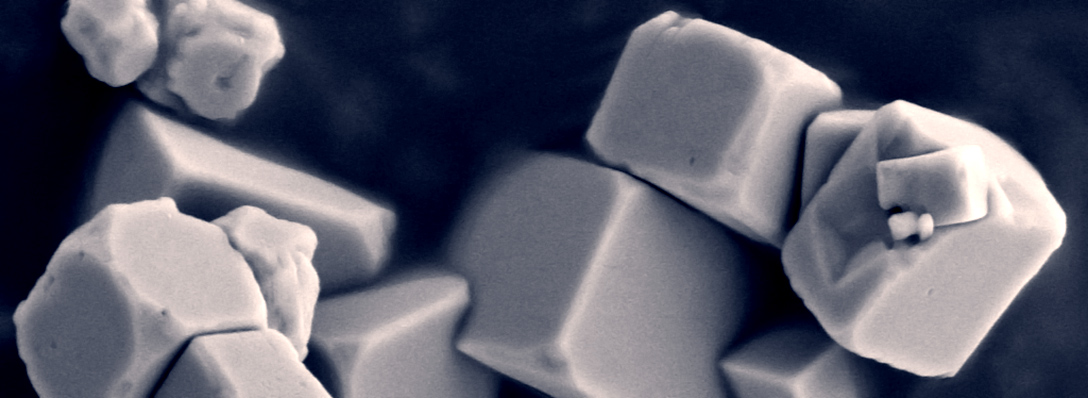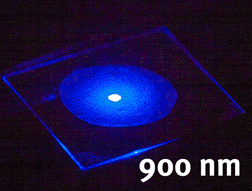Main content
Top content

Harmonic Nanocrystals

Spectral tunability: changing the infrared input wavelength yields different colors in the visible spectrum.
Crystals sizing down into the nanometer-scale are an intriguing subject to study. Due to the enormous size-constraints, their physical properties may differ vastly from bulk material. Furthermore, their characteristics allow application in a broad range of scientific topics, including biology, chemistry as well as physics.
Specifically, in the field of nano-biophotonics, using polarizable nanocrystals as novel contrasting agents carries significant advantages over established methods. Due to frequency conversion, these particles do not suffer from photobleaching or photoblinking. Furthermore, efficient spectral separation of pump and probe light can be achieved. In terms of wavelengths, both visible and infrared radiation may be used. The most notable advantage, though, is the generation of coherent radiation, thus allowing holographic 3D spatial resolution of nanocrystals at interferometric precision.
This project focuses on strong polarizable, oxide nanocrystals for application in holographic microscopy. Therefore, studies regarding the relation between conversion efficiency and particle size as well as dispersion behavior are entailed. Coherence properties are particularly interesting which are determined not only by the particle size but also by the temporal laser pulse length. Additional points of study embrace the particles' surroundings, especially biological tissue, and its influence on the conversion efficiency, biocompatibility in general, and degradation characteristics in physiological environments.
In order to answer these questions, holographic microscopy (optical tweezers included) in combination with methods known from femtosecond-spectroscopy is required. Particular challenges are preparation and detection of single, novel nanoparticles with low conversion efficiencies as well as delimitation between coherent and incoherent light emission, i.e. flourescence. This project ends with the transfer of knowledge onto other strong polarizable nanocrystals.

